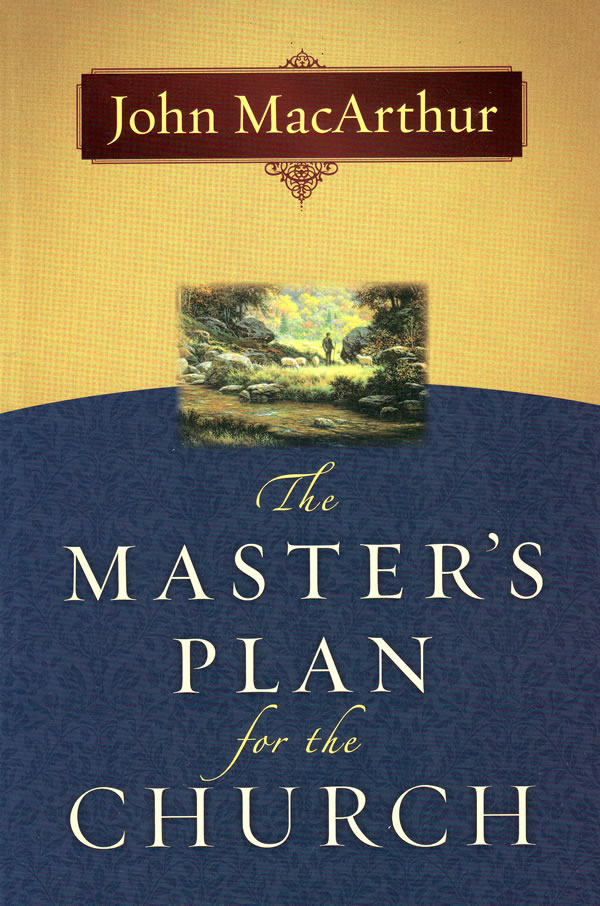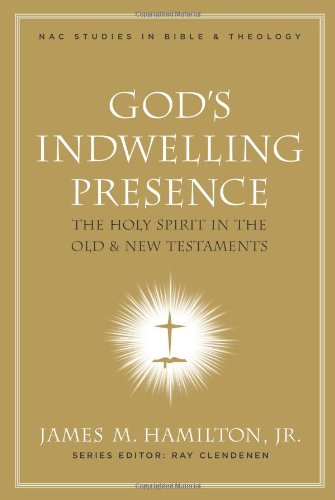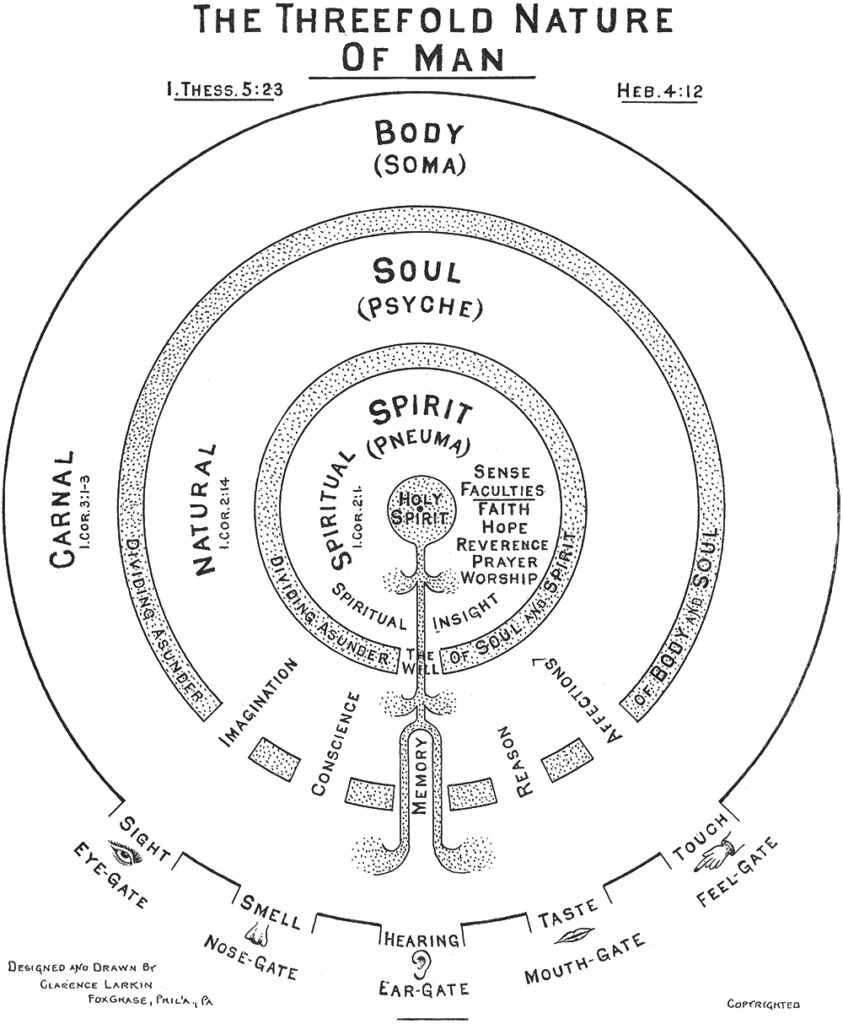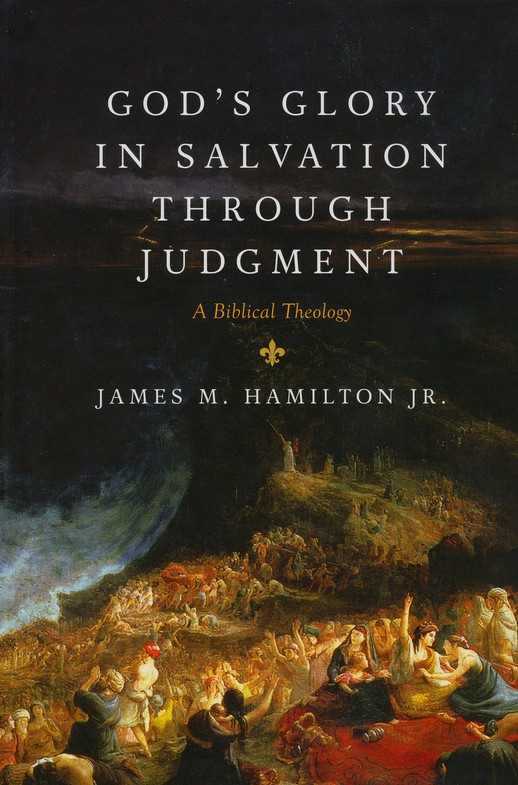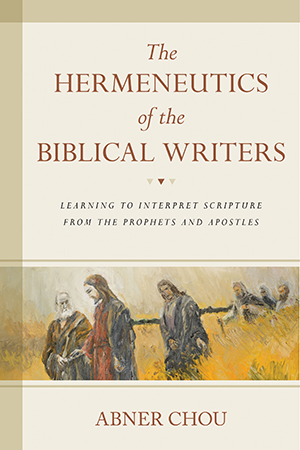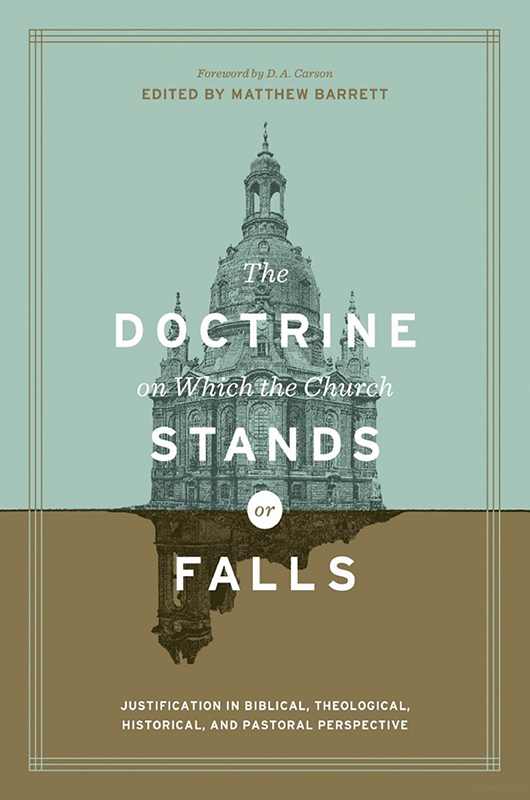A body of believers in Christ Jesus is rightfully viewed as an anatomy of a church. It consists of a skeletal structure, internal organs or systems, muscles, and the head. Specifically, as described throughout the book The Master’s Plan for the Church by John MacArthur, various characteristics and performative attributes are associated with the body. From the individual to subgroups of people, together they comprise functions that carry out God’s will for His people and the world. Through effective leadership, maturity, and experience, the church is guided by doctrines and principles centered upon the authority of Scripture. Scripture is the weight by which the church collective is obedient, unified, faithful, and disciplined in truth and righteousness. Among various additional attributes, such as humility, gratitude, accountability, and flexibility, the church’s abiding fruits produce spiritually healthy members to glorify God with outreach, missions, and community well-being.
The Skeletal Structure
There is an interdependence among these attributes that complement one another toward intended and proper functioning order. To meet its objectives and commissioning requirements of Christ, it consists of gifted or obedient people willing to serve in both love and honor. Unpolluted by sin and pervasive self-interest, the internal commitments of the church concerning Scripture, prayer, fellowship, worship, outreach, sacraments, giving, and discipleship are among its chief functions. The church exists with its skeletal structure to understand it as having a framework to include a foundation, specifically around its absolute commitment to sound doctrine, a high view of God, authoritative Scripture, personal holiness, and the supreme authority of Christ. These anatomical elements support the body of the church to perform its functions and achieve its objectives.
The underlying recognition and emphasis that God is the supreme point of attention and authority within the church are of vital necessity. Too often, the church is horizontally focused on community activities or social endeavors that don’t satisfy the church’s vertical purpose and mission. To look at church bulletins with week-by-week events having nothing to do with its purpose and functions dilute its effectiveness and marks congregations as social clubs with a weekly Tedtalk about better living. Churches loaded with bingo gatherings, bowling nights, and sewing events, among others, miss out on God’s plan for the church without paying as much attention to their purpose and mission. Elaborate youth programs that place incidental attention upon instruction, discipleship, or evangelism further indicate the priorities of a church with a low view of God. While social gatherings have their place, small groups for home bible studies are often little more than family or home fellowships without prayer, accountability, learning, time in the Word, etc. Small group gatherings become movie nights, trip planning efforts, or a single speaker-led point of social interest without discussion or God-centered objectives.
The church that supplants the authority of God for its interests instead is a church that at times abuses Scripture to drive outcomes and leverage social capital toward its ability to retain members or sustain economic prosperity or viability. Expositional preaching is a rarity, and there is very little structure around necessary doctrines about core beliefs such as justification, sanctification, holy living, sin, hell, condemnation, service, worship, and so forth. Shallow theology leads to shallow devotion, shallow worship, and shallow instruction. Leaders that set up churches as a source of entertainment to attract members run the risk of producing pleasure-oriented social clubs errant toward self-worship. Some churches seek to eject biblically oriented persons with a high view of God and His interests.
MacArthur writes, “One final component of the skeletal structure of a church is spiritual authority. A church must understand that Christ is the Head of the church (Eph. 1:22; 4:15) and that He mediates His rule in the church through godly elders (1 Thess. 5:13–14; Heb. 13:7, 17)” to stress that the church must accede and operate to the authority of Christ. If the church is a non-praying church, it’s because it has elders that are not praying. If the church is non-biblical, the elders and leadership are not in the Word or don’t accept its authority. The instructions that Christ gave to the church through His apostles are not the primacy of the church. They’re the supremacy of the church. Holy Spirit operates through the Word of God, and the church must abide by what is written in His holy Word.
As a follower of Christ, it is my solemn responsibility to share what I’ve learned and the grace I’ve been given. The abundance of mercy and patience I’ve been given is a model to follow as an instrument of God’s abiding love and grace. While I’m active online in sharing the gospel and biblical principles I’ve learned, I also write quite a lot to cover book reviews and topics of inspiration centered upon Scripture. As the church framework is entirely suitable and necessary for forming the body of Christ, it overlaps with the direct and extended family as a smaller body of believers. I pray and desire that the material I learn through studying church formation and function would lead to personal improvements toward readiness and more meaningful contributions among family, friends, and church members over time.
The Internal Systems
The internal systems of the church represent the various fruits of the Spirit (Gal 5:19-25) that correspond to the attitudes of its members. Conversely, as the church is metaphorically viewed as an anatomical body with a skeletal structure, muscles, and head, it also consists of internal systems such as organs to sustain life. These correspond to some behaviors that characterize people of God who live by the Spirit and produce purposeful behaviors as active and conscious efforts stemming from internal predispositions and mindsets. A range of character and behavior attributes operate within a congregation and distill to each individual living in a functional way. The range of internal systems is an organic set of virtues and behaviors predicated upon the attitudes listed within The Master’s Plan for the Church. With varying support from Scripture concerning the internal attitudes, the list is as follows:
The internal attitudes of the church listed represent a weight of obligation or ideal characteristics associated with a biblical body of believers. As the book was published in 1991, it still holds valid, relevant, and of significant necessity or merit, but it is by no means current or exhaustive. The onslaught of cultural Marxism, egalitarianism, and post-modern inclinations of society that plague the church is widespread across all denominations and traditions throughout Christendom. For example, MacArthur mentions the necessity of adherence to truth in a few places, but it isn’t highlighted as a pressing concern. Numerous church attendees today are given to the affirmation of lifestyles that Scripture clearly forbids.
| Item | Attitude | Description | Reference |
|---|---|---|---|
| 1. | Obedience | The church does what God says to do. | 1 Sam 15:22 |
| 2. | Humility | Set yourself below others. | Phil 2:3-4 |
| 3. | Love | Apply biblical love to meet needs. | 1 Cor 13:4-7 |
| 4. | Unity | Absence of contention and division. | John 17:21 |
| 5. | Willingness to Serve | Abilities actively applied to others. | 1 Cor 4:1-2 |
| 6. | Joy | Outward exuberance of the heart, soul, and mind. | Rom 14:17 |
| 7. | Peace | Inward contentment of the heart, soul, and mind. | John 14:27 |
| 8. | Thankfulness | The continuous attitude of gratitude. | 1 Thess 5:18 |
| 9. | Self-Discipline | Persons with persistent truth and righteousness. | Phil 4:8 |
| 10. | Accountability | Helping each other overcome sin. | Rom 7:15 |
| 11. | Forgiveness | Forgive others as God has forgiven you. | Matt 6:12-15 |
| 12. | Dependence | Attitude of personal insufficiency toward God. | Deut 6:10-11 |
| 13. | Flexibility | Absence of stubborn thoughts and practices. | Matt 15:1-39 |
| 14. | Desire for Growth | Persistent interest in feeding on God’s Word. | 1 Pet 2:2 |
| 15. | Faithfulness | Long-term reliable attendants, servants, worship | 1 Cor 4:2 |
| 16. | Hope | Confidence in future security and eternal life | Rom 12:12 |
Table – MacArthur’s View of Necessary Internal Attitudes of the Church
Published in 1991 with an update in 2008.
Moreover, the rise of pluralistic thought among people significantly infects the church as it concerns various biblical claims of exclusivity. The church isn’t called to be a social activist group, and it can not tolerate harmful and errant ideologies that run counter to the gospel and the purpose of the church. The church’s commitment to truth as a subordinate matter of self-discipline (Phil 4:8) is a weak defense or posture against unwanted influences that degrade its effectiveness. Churches that compromise on truth and biblical principles often become something other than an authentic church, or it dies off by attrition through a loss of people who stop attending or forsake fellowship. Consequently, church leaders who succumb to the short-term confused interests of society and academia can face undue hardships to which there is no viable remedy.
As The Master’s Plan for the Church is a compilation of teachings, it offers a listed means of a well-formed church that isn’t meant to be fully explanatory. Through various specific church stories and lessons learned, biblical principles are explained and reinforced to guide the reader toward circumstances that positively affect individuals and the body as a whole. At times, the term “gift” arises to lead, support, or contribute to the church in a uniquely intended way. Not where service is a chore or the arbitrary efforts of volunteers, but according to what people are good at doing. Paul wrote of gifts in Romans 12:6-8 and 1 Corinthians 7:7 to underscore the spiritual nature of their purpose.
The idea of “just jumping in and doing something” is counter-productive unless a person is entirely flexible and open to serving in any capacity possible. However, suppose church leadership or administration offers opportunities to serve in a group capacity. In that case, that is often a rewarding and productive endeavor (e.g., short-term poverty relief, homeless veteran aid, etc.). Volunteer efforts that support the community through the church to achieve Kingdom objectives by loving people well is an entirely meaningful way to go; however, if it is quid-pro-quo for profit or partnership with a municipality that sets up an interdependency, unwanted entanglements are sure to follow.
Gifts given to people are meant to fulfill the functions of the body as a church to serve God, glorify Him, and satisfy the needs of people. Churches that broadcast to congregations opportunities to meet specific needs leave individuals to assess suitability as relevant. By contrast, spiritual gifts can involve competencies, skills, or talents that accompany people for a spiritual purpose. A close look at the “gift” term Paul uses in Romans 12:6 specifies a uniquely intended purpose supported by the authority of Scripture for the church (Rom 12:4-5).
Gift: χάρισμα, ατος, τό (χαρίζομαι)
that which is freely and graciously given, favor bestowed, gift [1]
ⓑ of special gifts of a non-material sort, bestowed through God’s generosity on individual Christians 1 Pt 4:10; 1 Cl 38:1.
• Of spiritual gifts in a special sense (Just., D. 82, 1 and Iren. 5, 6, 1 [Harv. II 334, 2] προφητικὰ χ.; Orig., C. Cels. 3, 46, 12; Hippol., Ref. 8, 19, 2) Ro 12:6; 1 Cor 12:4, 9, 28, 30, 31.[2]
The gifts of grace (Rom 12:3-8) do not correspond to free labor with “no experience required” toward service projects for profit as “doing ministry.” Contributions to the church involving spiritual gifting are not homogenous; as Paul wrote, “members do not all have the same function.” In this sense, service projects that operate as a business from labor or services are not specifically ministry, per se. The intended meaning of Paul’s message indicates that ministry or service to the church comes by grace and the gifts given to people for a specific spiritual purpose.
The church does not bestow gifting. God does this through various means unique to each person. The church adheres to the internal systems developed toward satisfying its purpose. MacArthur wrote, “There are many other areas of ministry a person can get involved in. Cultivate the giftedness that God has given you and become active in whatever ministry God leads you to.” Appropriately, this corresponds to Paul’s instructions to the first-century church of Rome.
The Head
Continuing the body analogy of the Church, “The Head” of the Church is the Lord Jesus Christ. As Paul wrote, “Rather, speaking the truth in love, we are to grow up in every way into him who is the head, into Christ, from whom the whole body, joined and held together by every joint with which it is equipped when each part is working properly, makes the body grow so that it builds itself up in love” (Eph 4:15-16), Christ Jesus operates having four functions of the Church as a body. Christ is the Savior, Shepherd, Sovereign, and Sanctifier, where they are a wholly exceptional yet a composite of His perfect Lordship as Messiah, Priest, and King. Together each has immeasurable value to the body of believers and right to each person who consists of that body.
As Savior, Jesus saves people from their sins (Matt 1:21). His very name is “Jehovah saves.” His name represents His identity as Mediator through His sacrificial blood given to satisfy the justice required to atone for sin and forgive them (Heb 9:22, 13:20). He was the perfect sacrifice for the sins of many who would turn to Him under a New Covenant of redemption (Matt 26:28). The New Covenant established by Christ’s sacrifice produced the “blood of the everlasting covenant” and it was full effectual once for all those being sanctified (Heb 10:14). Not as a temporary covenant, or a partially effective covenant. Still, a perfect sacrifice that by His blood of perfect offering sin is forgiven, and people are freed from sin.
His redemptive work on the cross pleased God that He returned Christ from the dead. To reiterate the astonishing biblical fact, God the Father approved Christ’s sacrifice to such an extent that He resurrected Him back to bodily life. With Christ Jesus risen and alive again, He became the great Shepherd to rule and teach His Church. Through His authority and Word (2 Tim 3:16), the teaching, correction, reproof, and training in righteousness represent His workmanship within the Church. From individual persons to the Church body itself, Christ reigns to accomplish His work so that every believer in God may be complete in Him.
Reiterating Christ Jesus’s authority as Head of the Church is necessary. The Church belongs to Him (Matt 16:18). As Shepherd, He leads the Church, but He also rules the Church through discipline and correction for it to accomplish His will. To instruct and guide the Church to abide by His interests as made evident through His Word within Scripture. As the Spirit speaks to the believer to convict, correct, and comfort, the believer is guided by His Word to bear fruit and live toward continual sanctification. To build His Church, individuals, or the Church itself could undergo sanctification toward greater righteousness pleasing to God.
By application, the Church does well to recognize that it is Christ who is head of the body of believers and the authority of church leadership is subordinate to Him. Christ’s plan and spoken intentions for the church must prevail over the plans and programs of the church for His kingdom. Projects not aligned with Christ’s interests for the church can dilute its effectiveness and purpose. This reading is a reminder about the prevailing and supreme authority of Christ over the Church as a body. I intend to become outspoken about the necessity of abiding in Christ as the head of the Church should circumstances present themselves in terms of initiatives to time spent on incidental endeavors.
I completely agree with the principles that Dr. MacArthur wrote about concerning Christ as the head of the Church. Moreover, the categories of Christ’s Lordship over the church are more than mere leadership. His position, status, and ownership of the Church bring any believer to obedience and submission as His authority comes from who He is and what He has accomplished. Believers in the Church are obligated to apply this truth as His obedient body.
The Muscles
The third chapter of The Master’s Plan for the Church covers in some depth the church’s various functions that correspond to the muscles of a body. As the previous two chapters of the book cover the skeletal structure and internal systems of the body, it is natural to view the functions or practices of the church with its behaviors. A range of inward and outward exertions of effort characterize a church as a means of strength, just as the muscles of a body spend energy to perform work. As individuals perform consistent acts of personal devotion and discipleship, the church applies effort to accomplish specific and repetitive tasks for the body’s spiritual development. Collectively, there are functions of worship, prayer, training, fellowship, outreach, missions, and more unique to the body as its various members constitute and extend its capabilities to fulfill its biblical charter.
The sections of this chapter read as a guidebook that serves as a reference for believers and churches who want to refer to the book as an operating guide. To form policy and develop processes or guidelines centered around a healthy congregation with proper attitudes, internal systems, and organizational structures in place. While there are no specific indications of relative priority, weights of concentrative effort, or distributed points of focus, numerous principles direct a church grounded in Scripture and the ministry of the Spirit. The functions of the church are identified and biblically described but without prescriptive one-size-fits-all techniques. The functions of preaching, teaching, shepherding, evangelism, and so forth are covered with the principles about how and what to do with some rationale about why. Much of the subject matter is about Grace Community Church, which stands as a model to emulate.
Some of the various topics within the text overlap or work together as adjacent and related functions toward individual believers or groups responsible for specific ministry areas. For example, both worship and giving are related. Or as teaching and training for instruction and application of discipleship functions such as prayer, fellowship, worship, and Scripture to remain obedient to the lordship of Christ. The degree to which impediments exist can be related to individual levels of sanctification or maturity in Christ. As there are areas of group weaknesses or unhelpful patterns of neglect or diverging interests among believers, the formation, character development, and growth of its members grow toward God’s intended purpose of the church nonetheless.
As a matter of personal interest, the “Building up Families” section has direct applicability. As MacArthur wrote, “In many Sunday school classes, people don’t learn much about the Bible, and they guess about what it teaches,” I continue to see this as a pressing area that needs attention. Especially within my family, there is an opportunity to better invest in bible reading time with my children. To build more Scripture instruction with my family to understand its truths and know God in a more productive or fruitful way. To apply what the functions of the church does, it is of high interest to spend personal prayer and bible time with my family as it also supports the church. Intentionally scheduling a periodic time to further grow in the Word of God separate from what does is sure to produce a valuable return on our efforts. As the church ministers to numerous people, we together haven’t reached sufficient range or depth to serve as a foundation for a lifetime.
A fully functional church requires its members to perform as it should as a body. If there is one single area that isn’t where it could be, there are limitations to its effectiveness that may inhibit its ability to love or serve Christ and His people well.
The Pattern of the Early Church
The first part of The Master’s Plan for the Church covered relevant topics about the church that functions as an anatomical body, and the second section pertains to the dynamic church. More specifically, the pattern of the early Church is examined from its founding to the ministry that grew within the first century. MacArthur makes connections between early churches in Jerusalem and Asia-Minor to churches today that involved formation, how they operated and their characteristics. The early church patterns and distinctions that shaped their founding included the roles of people, locale, governance, doctrine, and pronounced growth. As compared to today, the early church wasn’t fragmented by denominations. There was a unity within the church guided by the Holy Spirit and rooted in doctrines that propelled it well into enormous growth for decades and centuries into the future.
As the purity of the church supported convictions around truth, faith, and practice, it was situated to build its presence within secular societies in the form of ministries. Within the early church, there was a concentrated effort to protect new believers from false teaching and instead provide instruction on sound doctrine. Apostle Paul further supported the continuous effort to assure the doctrinal integrity of the church in his letters to the church. It was especially concerning conduct, organization, scriptural principles, and theological truths as written by the guidance of the Holy Spirit. The Holy Spirit was actively involved in the incubation and development of the early church both directly and through people to render and permanent and lasting understanding of what it means to exist and function within the Kingdom of God on Earth. Paul wrote passages of significant relevance to Timothy about the purpose of Scripture, service, and responsibility (2 Tim 2:1-2, 15, 24-25, 3:14-17, 4:1-2).
Further comparisons between early and modern churches are made concerning leadership. Paul guided New Testament church leadership formation to serve specific purposes according to gifts given to people. Functions, duties, and responsibilities were defined around pastors, deacons, elders, overseers, teachers, and evangelists to provide clarity about leadership and its framework. The early church was unified in its direction as its decision-making, defense, and discipline situated it to accomplish its mission and objectives. The church was rendered stable for organic and geometric growth through direct involvement from the Holy Spirit’s use of Paul.
Paul’s letters to the early church were directed to individuals and congregations susceptible to the influences of secular society (Greco-Roman culture and Judaism) and paganism. It was necessary to align new believers to correct doctrines through the teaching authority of leaders with decision-making capacity (1 Tim 5:17). Consensus among men to arrive at decisions through the study of Scripture, prayer, counsel, and fasting were able to solve church issues and keep it on its intended path. Where or when it was necessary to refute individuals or groups about false instructions or guidance for monetary gain or contradictory interest, a sound and fortified defense was necessary (Titus 1:9-11). Finally, errant individuals who were disruptive to the church were to be disciplined or ejected to protect a vulnerable congregation (1 Tim 1:20).
As the head of the Church is Christ Jesus, His leaders appointed to shepherd it are responsible for its care, feeding, guidance, and protection. The fulfillment of their duties is a privilege but also a divine appointment that brings joy and hardship through the service and obedience of leadership as it is answerable to Jesus Christ. Qualified and blameless leaders who are saturated in the Word of God and indwelt by the Holy Spirit are responsible for its ministry.
Elders, Deacons, Other Church Members
Church leadership is further examined by additional roles within the church. Beginning with the first-century churches in Asia Minor, Paul writes of leadership positions and responsibilities to explain qualifications and eligibility. For a growing church it was necessary to assure order and protection from false teachers and believers, so to prepare the church for unwanted and destructive influences, leadership stability was a high interest. With pervasive secular, pagan, or cultural influences, leadership must be installed and maintained according to the teachings of the apostles. Where the formation of doctrines is upheld and followed with the guidance and enforcement of appropriate leadership with strength and will. Unencumbered by social or cultural influences that advocate for special interests aside from the gospel, discipleship, and the life of the church.
When Elders are selected and placed into positions of authority, that occurs from God according to His word. Not according to what someone’s interests are to suit a specific organization for contradictory purposes. God’s word is the criteria for selection as His word is the method by which leaders are chosen. Selected elders are not chosen from the relationships that exist with leaders already present within the church, nor are they selected as most loyal to a church’s vision, or operating objectives. If an elder is selected and serves as a leader conducive to expected performance requirements, duties, and responsibilities, the church or leaders who choose a leader that way is off course and does not abide by the authority of Scripture. Performance, duties, and responsibilities are not mutually exclusive, but the requirements for eligibility to serve in key functions, as prescribed by Scripture, take an overriding concern and prevail regardless of other factors.
According to Scripture, elders are excluded from positions of leadership from a variety of conditions. In Paul’s letters to Timothy and the Corinthians, he outlines specific requirements concerning leadership (1 Tim 3:1-2). Furthermore, elders, or bishops, are to possess numerous character traits that render them blameless or of a background with a major impediment to leadership, or the church. The leader is to be faithful, temperate, sober-minded, of good behavior, hospitable, prepared to teach and share his faith, not given to alcohol, not violent, or a hot-head, not greedy, and someone who manages his home well (1 Tim 3:2-7). While today, this is a tall order, given the seasoned background of everyone, the prospects of leadership are very limited. Generally, everyone has baggage involving weaknesses or a history that brings pause.
Paul’s intent, under the guidance of the Holy Spirit, is to set leadership in place with continuity across the geographic locations. A standard to which there are consistent expectations about how leadership is to serve in the church. Deacons among those locations who serve as another functional level of leadership have specific requirements concerning qualifications, too. Proven leaders within the church and home, deacons are given delegated authority in positions of leadership to functionally guide the church and perform duties concerning its mission and purpose. Deacons are placed into positions of leadership with the authority necessary to accomplish tasks that render other leaders available to complete their primary duties. Elders and deacons who add formal organizational structure to the church provide the means by which men and women congregants work and care for one another.
Paul instructs the churches about suitable conduct befitting men and women within the church. As people minister to one another, they are given expectations concerning conduct according to male and female distinctions, authority, faith, and practice.
A Look at the Thessalonian Model
When apostle Paul wrote to the church in Thessalonica, he presented to readers down through the centuries essential attributes of the church. MacArthur originates categories to sort through the attributes and partition their meaning to bring understanding about the church is formed and how it functions. More specifically, there are several descriptive titles that are helpful to parse while, taken together, rendering a coherent view of what the biblical church is.
- A Saved Church
A church of individuals regenerated by the Holy Spirit who believed the gospel and placed their faith in Christ (1 Thess 1:5) - A Surrendered Church
The pursuit of Christlike behavior is evident among individuals within the church. To Paul’s written testimony, the church of Thessalonica imitated Paul, Silas, and Timothy as models of faith and practice (1 Thess 1:6). - A Suffering Church
The saved and the surrendered church is going to bring consternation to the world. With that will come persecution (1 Thess 2:14-16) and suffering. As the world hated Jesus, it will hate and persecute the church (John 15;18,20). - A Soul-Winning Church
The church is characterized by outreach, missions, and the spread of the gospel. By living Godly and fruitful lives, the church becomes noticed and of appeal to some (1 Thess 1:7-8). - A Second-Coming Church
Anticipation of the return of Christ is a source of motivation for believers within the church. Christ Jesus’ promise to return is deliverance from wrath as He gathers His church awaiting His return (1 Thess 1:10). - A Steadfast Church
Even through affliction and distress by the faith of the Thessalonians, they remained persistent in their commitment and love of one another. They stood firmly on the Word of God and in the gospel (1 Thess 3:7-8). - A Submissive Church
The church’s obedience to Christ and His word isn’t contentious, nor does it question the instructions of the biblical writers among believers concerning faith and practice (1 Thess 1:6, 2:13, 4:1).
All features of the church present a portrait of a model congregation that is modeled after the church pleasing to God and His apostolic servants. Through culture and secular society from this generation extending back to the first century, the aspirational characteristics carry the same weight. Departure from these principles is to depart from the biblical model of how the church is dispositioned and operates within the Kingdom. Christian unity is predicated upon these biblical principles to assure growth and effective use of Christ for His purposes.
As long as the church and its leadership are adherent to the Word of God as properly interpreted, then its congregants, followers, volunteers, and staff have an obligation to accept instruction and obey. A pastor’s perspectives incongruent or contradictory to biblical principles have no place in the lives of believers. The Word of God is not an instrument to compile verses to leverage authority and accomplish objectives and projects on interest outside the core principles of the biblical model. A church diluted in its effectiveness is a church that doesn’t abide by the new covenant structure given by the Holy Spirit through the biblical writers.
Marks of an Effective Church
From the first century to today, there is a marked contrast beyond the early church. Factors inherent within an effective church are widespread concerning its activity, leadership, and trajectories. Regarding its place in the world and its objectives, MacArthur derives biblical principles that cross a spectrum of pillars involving the authority and focus of leaders and believers within the church. The practices of those within an effective church live out their faith through people who are willing to change, have concern for one another, and bear a devotion to God and family to impact loved ones and the local community. To achieve its goals and objectives, the church reaches its functional imperatives through outreach and discipleship, while faith, sacrifice, and worship are at the heart of the church.
| Marks of an Effective Church |
|---|
| Godly Leaders |
| Functional Goals and Objectives |
| Discipleship |
| Community Penetration |
| Active Church Members |
| Concern for One Another |
| Devotion to the Family |
| Bible Teaching and Preaching |
| Active Church Members |
| Concern for One Another |
| Devotion to the Family |
| Bible Teaching and Preaching |
| A Willingness to Change |
The church is not a reckless assortment of programs that suit the interests of social culture through the local manifestation of the community. Kingdom objectives shall prevail at every turn and have their way through the Holy Spirit whether the local church organization cooperates or not. God assures that His people are brought to His kingdom and instructed to serve His interests. And He uses His church, large or small, to accomplish what He decreed necessary to build His Kingdom of people. God uses the work of the people within the church to meet His objectives as they have concern for one another and love God by doing what He has instructed by His word through the patriarchs, prophets, poets, and apostles.
There are numerous ways in which people show care for one another, as made clear from God’s words to the church. The stirring up of God’s people that his great commission becomes met involves the spiritual health and well-being of individuals committed to Him and each other through various means. It is among these means that God accomplishes what He intends to do through His church. MacArthur lists these in an integrated manner.
| Passage | “One Another” Description |
|---|---|
| James 5:16 | We are to confess our sins one to another. |
| Col 3:13 | We are to forgive one another. |
| Gal 6:2 | We are to bear one another’s burdens. |
| Titus 1:13 | We are to rebuke one another. |
| 1 Thess 4:18 | We are to comfort one another. |
| Heb 10:25 | We are to exhort one another. |
| Rom 4:19 | We are to edify one another. |
| Rom 15:14 | We are to admonish one another. |
| James 5:16 | We are to pray for one another. |
By fellowship and unity, as God’s people are gathered together in His name, He is among them (Matt 18:20). As believers conform to the Word of God, He works with them and through them. Churches recognized as “great” are effective according to a relative perspective from history, culture, society, or criteria established through the Word. Accordingly, as a Venn diagram would indicate overlapping characteristics to indicate relative levels of emphasis, there are weights and concentrations of effort and outcomes more suitable to where a church is appointed. All churches are not homogenously even in terms of strengths and what ministries or programs characterize their posture toward believers internal to a specific church. Among all the marks that identify an effective church, those marks bear descriptions of internal practices, whether present or at varying levels of capability and strength.
As church leaders evaluate its condition and effectiveness, these marks may also serve to recognize gaps and prayerfully gauge where to focus corrective action. It simply must be clear what biblical principle(s) to be effective about. Shaping what a church does to build its effectiveness would involve careful attention to what areas of shortcomings exist to develop a way forward. Attainment of goals and objectives that originate from the execution of a strategy assumes there are existing capabilities, capacity, and resources to bring together the initiatives that lead to fulfilling the biblical principles MacArthur outlines.
The Calling of the Church
While it is essential to understand how to recognize an effective church, apostles Peter and Paul make clear what the church is called to do. More specifically, a church can effectively accomplish its objectives and not Kingdom objectives if it sets its own course absent of what God’s word instructs. However, a church that abides by Scripture and obeys its instructions will meet the Kingdom objectives that God requires. A church can certainly meet objectives for social, economic, and community gain, but not for the Kingdom according to what God has given by His word. The calling of the saints as an assembly within the church is to attain states of position and action according to how the early church was instructed (Rom 1:6-7, 1 Cor 1:2, 26, Eph, 4:1-4, 1 Thess 2:12, 2 Tim 1:9, 1 Pet 5:10).
The calling of the authentic Christ-centered church is directional. Before its inception, it was elected and set to exist for God’s sovereign purpose. It is an eternal reality present before God along a corridor of time to accomplish what He knows and forms as an everlasting enteral now. The election of the church begins from its perspective the eternal calling to accomplish what God decreed. A sequence of states, events, and actions that follow from God’s created order bring within His Kingdom people for an everlasting fellowship. Created for His purposes and good pleasure, people who freely choose Him and the existence of a reality He has brought together.
The process in which people are created and brought together involves their redemption from a fall into sin that God foreknew in advance from a historical perspective of humanity. As a theodicy that involved humanity succumbing to evil and subsequent suffering to emerge within creation, His people who chose Him through redemption were appointed before time began. The purpose of redemption is to recover lost humanity and render to God a Kingdom of contingent beings. Beings who desire Him and each other for a purpose independent of time and free of disorder and decay.
As dross is melted away from precious metal, the church is called to sanctification and live in holiness as God is holy (1 Pet 1:16). Set apart from the world living under common grace, sanctification is an instrument by which God’s Kingdom of people are called out from it. Through its consecration, it is sorted and removed from the profane. A spiritual reality separated from the deeds of the flesh (Gal 5:16-25, Col 3:5), God’s sanctified people are separated from the world (2 Cor 6:17) to live holy lives. To live in the world, but not of the world, God’s people are not to love the world as that would set them in enmity with Him (Jas 4:4). Especially relevant to leadership in the church, but also to congregants who are willing and obedient to the Word concerning discipleship, where there is no culture and church staff inclination to become self-insulated.
A church in the Word with a high view of it as a treasure abides by its meaning. It is never neglected but relied upon with deep conviction that it communicates the voice of God about how it should live and what it must do. It isn’t enough to speak from platitudes to inform people of principles, guidance, and messages from the pulpit. It must be lived. The church must be shepherded where new and seasoned believers are encouraged and motivated in the Word, prayer, fellowship, worship, and evangelism. A church about the business of entertainment and social interest that sets a detached environment by which the laity self develops its spiritual formation only through small groups and church programs is utterly unacceptable. The core and peripheral interests that God wants, as made clear by His word, are the given necessities to live by. The pastorate and equipped leaders of the church must be attuned and engaged to the church’s unique needs for its sanctification and to reach its God-given objectives through outreach and biblical discipleship.
The vision of the church must be called to the glory of God. As the affections of the saints within the church are upon God and His interests, there is a separation between them and the world. The citizens of the Kingdom of heaven (Phil 3:20) are the believers among congregations throughout the church. The Lord and King of a different realm that require the loyalty and obedience of people who belong to Him involves a mutually exclusive relationship as biblically stipulated. The glorification of God by people who love Him is most satisfying and pleasing through worship where His people enjoy Him forever (WSC, Question 1; 1 Cor 10:31, Rom 11:36, Ps 73:24-26, John 17:22,24).
Finally, among all points of calling pertaining to the church, it is to proclaim the Kingdom of God and what it entails. As Christ Jesus proclaimed repentance and the Kingdom of Heaven at hand (Matt 4:17), so are His saints to do the same. The Kingdom of God proclaimed involves the gospel, public, private and corporate worship, and all matters pertaining to life and godliness. The whole counsel of God from His word is shared with the community and the world for His glory and the edification of the saints as the Kingdom grows for His good pleasure.
The Lord’s Work in the Lord’s Way
As the church and people of God set about doing the Lord’s work, there are biblical examples of how that is done. With purpose and intent, the worker doing the Lord’s work is doing what God has appointed through various means to accomplish specific objectives. The examples of apostle Paul’s work as he fulfilled his efforts to form and build the early church are readily apparent through specific instructions in his letters. However, his work’s nature is highlighted through his travels from city to city and among fellow workers. The Holy Spirit guided the circumstances in which he made a lasting difference as opportunities were opened and seemingly appropriate courses of action were blocked or closed. An apparent area of the Lord’s work can get redirected, or directions from the Lord can be held or set aside as “no,” or “yes, but not now.” MacArthur wrote that what seems to be less substantive spiritual material as scripture concerning the apostles’ activity and the early church is very informative about how the Lord’s work is done in the Lord’s way. It certainly appears that the Lord used letters to instruct and develop the church to intentionally inform believers about the meta details concerning Kingdom advancements to follow (1 Cor 16:5-12, 2 Cor 1:5-16, Phil 2:30).
MacArthur also writes about strategic thinking Paul which originates from a visionary perspective. A critical point he makes concerns the preparation and timing of what a worker does to make himself ready to pursue an opportunity God opens. Working now and in the present to prove ourselves useful to the Kingdom enables or supports our readiness for opportunities that should arise. The preparation specifics revolve around planning, setting a vision, and developing a strategy to accomplish the Lord’s work. Concurrent with the development of spiritual gifts, a worker’s ministry is intentional and of deliberate effort in terms of contribution and what the Lord has given. A passive approach to ministry involvement or pursuit is not the biblical model workers are given to undertake and complete the Lord’s work.
As given by the apostle’s work, what they set about to do was organic in nature. Their approach to ministry wasn’t mechanistic, haphazard, or rigidly structured, but persistently successive through the Spirit’s leading. While somewhat event-driven, any pressing circumstances or conditions in the field were of paramount concern. Paul demonstrated malleability in planning and where he would visit cities and towns as the network of churches formed in Asia minor. The methods by which Paul accomplished his work were marvelous examples of geographic growth, but his work was spectacular regarding the depth and range of his discipleship among believers. As churches were formed with the fellowship of believers, leaders would assume responsibility for the continuation of congregations. The Kingdom of God formed in the hearts of people who were together made alive in Christ and held loyalty and love among each other for retention in the Holy Spirit and what He was to accomplish.
MacArthur’s startling assertion is that “if you want God to use you in the future, you need to be ministering in the present.” Without elaboration, the point is that a worker must be committed to service in the present as there are expectations of service in the future. Workers involved in the Lord’s work must always be active in what the Lord can accomplish through them (1 Cor 15:58). This could include family ministry, evangelism, personal outreach, counseling, service projects, writing, encouragement, care for the poor and afflicted, or some combination of numerous possibilities. The workers’ efforts are an outworking of their spiritual gifts to serve the Lord and people for ministry work.
It must be understood and accepted that there will be opposition to ministry work. Both spiritual and natural impediments to equipping the saints and the development of the church are an expected challenge. From examples given in Paul’s work and those of the early church disciples, it is easy to understand the types of opposition that will arise (2 Cor 1). From private persons, businesses, and government, the world and its systems will take an interest in the soft and hard persecution of the saints and the church. Civic, cultural, and economic opposition to the saints and their objectives stem from conflicts of interest that are ultimately spiritual. Moreover, the church itself can run counter to what believers do to accomplish the Lord’s work as biblically described and expected (2 Cor 4:10). With the comfort of Paul’s letter to the church at Corinth, workers of Christ are encouraged to take up the work in such opposition even when the burdens are overwhelming because of the fellowship promised with the King we love (1 Cor 1:8-9). There will be church failures, individual abandonment, and apostasy among people who become adversaries to the gospel and workers of the Kingdom.
As evident through Scripture, various people contributed to the Lord’s work in a synergistic and coherent way. Specifically, by name, a growing number of people were together focused on the commission of Christ Jesus to take the gospel to the world and build His church. The living faith of people involved an interdependency in accomplishing ministry objectives and simply loving and supporting each other well. While there are levels of maturity and authority in the church, there are also, within reason, shared responsibilities that involve all people of the church without regard to any claim of status. Leadership within the church involves delegation of responsibilities as it did in the early church by appointing elders and those who would care for congregants. However, ongoing responsibilities are shared to minister the gospel and the Word of God among people who are being reached and sanctified. The authority and maturity of believers in the church who attain status and privilege do not supersede what responsibilities remain according to the spiritual gifts given among individuals.
A significant point MacArthur makes about leadership involves the dominant role of the Holy Spirit. While an assertive and driven leader presses to meet Kingdom objectives, yielding to the Spirit and not dominating a team is necessary. The Spirit of God works among people who seek His will for their efforts. The work of the Spirit overrides the intent, plans, and directions of a ministry and His workers as gains are produced according to what work God has established. A thorough understanding of what occurred in the book of Acts and from Paul’s letters to the saints provides meaningful guidance today about understanding the Spirit methods of early church development. Corresponding principles applicable today require at the very least a sensitivity to the Spirit’s leading.
Understanding the Seducing Spirit
The subject of “Seducing Spirits” is evaluated at length when considering the qualities of an excellent servant from MacArthur’s perspective. The subject of spiritual seduction centers upon the falling away of people from the faith. To understand apostasy, it is necessary to define it and recognize its predictability, chronology, source, character, and teachings. To grasp the meaning of it as a profound error, apostasy has a common thread of misunderstanding and denial around the goodness of creation and God’s desire for gratitude and worship.
Long ago, during the growth and development of the early church, Paul warned Timothy about people who would leave the faith (1 Tim 4:1-3). In later times, without specificity, Paul characterized desertion by people who would become “devoted to deceitful spirits and teachings of demons.” People seduced away from the faith and who becomes devoted to false teaching are lured away by demonic spirits through the human agency of false teachers (MacArthur, 160).
“Now the Spirit expressly says that in later times some will depart from the faith by devoting themselves to deceitful spirits and teachings of demons, through the insincerity of liars whose consciences are seared, who forbid marriage and require abstinence from foods that God created to be received with thanksgiving by those who believe and know the truth.” – 1 Timothy 4:1
People who become apostates will be lured away by deceitful and spiritually fierce predators (Acts 20:29-30) who desire to follow deceptive ideas about truth, God’s word, and the gospel. Some who leave the faith make an intentional effort to deconstruct learned principles and specifics concerning Scripture as revealed divine truth and doctrines of spiritual formation that represent the whole counsel of God.
Apostasy is expected as the Spirit has informed prophets (Deut 13:12-15, 32:15-18, Dan 8:23-25). Where the specific cause is demonic deception, there is certain destruction to those who depart from the truth of God’s word and what He has revealed through the patriarchs, prophets, poets, and apostles. Christ Jesus also warned of people who would depart from the faith. There are very many who will choose to abandon their faith or who will be led away.
| Identity of Apostates | Reference |
|---|---|
| “For many will come in my name, saying, ‘I am the Christ,’ and they will lead many astray. “ | Matthew 24:5 |
| “For false christs and false prophets will arise and perform signs and wonders, to lead astray, if possible, the elect.” | Mark 13:22 |
| “Let no one deceive you in any way. For that day will not come, unless the rebellion comes first, and the man of lawlessness is revealed, the son of destruction” | 2 Thessalonians 2:3 |
| “knowing this first of all, that scoffers will come in the last days with scoffing, following their own sinful desires.” | 2 Peter 3:3 |
| “Children, it is the last hour, and as you have heard that antichrist is coming, so now many antichrists have come. Therefore we know that it is the last hour. They went out from us, but they were not of us; for if they had been of us, they would have continued with us. But they went out, that it might become plain that they all are not of us.” | 1 John 2:18-19 |
There is a certain condition and trajectory of people who eventually fall away from the faith. The characterization of people who lose faith and abandon the “word of the kingdom” (gospel) is given by Christ Jesus’ explanation of His parable of the sower (Matt 13:18-23). To fulfill prophetic utterance, Christ spoke in parables about many subjects, but His parable of the sower has significant meaning about the states in which people have the word of the kingdom stolen from them, choked out, or pressured away by hardship and persecution.
Characteristics of people who receive God’s word and accept and understand it are those who bear fruit according to individual potential. All other conditions by which the word of the kingdom is received reveal an absence of understanding, shallow-rooted acceptance by the hardness of heart, and the possession of worldly distractions that remove further ability to yield fruit. The word of God heard and understood is meant to bear fruit within a person saved by faith. It is not by happenstance that Jesus spoke of the parable of the weeds (Matt 13:24-30, 36-43) after the parable of the sower (Matt 13:1-9, 18-23) to warn that apostates shall be gathered by the angels and destroyed (Matt 13:42). The loss of faith among people who encounter the word of the kingdom isn’t only by circumstance. There is malevolent intentionality against fields of people who would receive and accept seeds of the kingdom and bear fruit as evidence of salvation.
Jesus spoke of the parable of the weeds to verbally illustrate the presence of Satan (powers of demonic deception), who implants tares (Matt 13:25) among seeds that bear the fruit of wheat. For the ultimate glory of YHWH, the Lord lets the wicked temporarily remain among people of faith and believers while there is risk and occurrence of deception and apostasy. The Lord’s people of the kingdom are retained by understanding and faith while there are demonic influences present among them with evil intent. People who succumb to distractions, hardships, the choking out of the Word, and false teaching will eventually apostatize to bear status as tares or weeds, which are gathered, bound up in bundles, and burned.
In the latter times of this church age initiated by the messianic era, apostasy is to be expected. During this period, people susceptible to false doctrines or contradictions to the truth of God’s word become lured away. More specifically, while the Holy Spirit guides believers into truth (John 16:13), deceitful spirits and false teachers lead people into error. Even in a church or spiritually pure context, the “doctrines of demons” are carried and spread by human agents who communicate lies (1 Tim 4:2). The errors people commit by thoughts, words, and actions are measured by the standard of what God reveals in Scripture. Contradictions to the Word of God originate from a spirit of error (1 John 4:6) compared to those who listen to the spirit of truth. Specifically, the Apostle John wrote to inform the church that those who listen to him by what he spoke and wrote are those who know God and are from Him. Refusal to listen to God’s biblical writers constitutes the error of apostates.
The spirit of apostasy is evident throughout scripture. Both in the Old and New Testaments, people who stop listening to God, or contradict His word, are those who no longer follow Him in truth. Examples of apostatized people throughout old and new covenant history who set their course do so from a posture of disobedience as they are often seduced away from faith and relationship with God toward His kingdom interests. To see who apostates were and how they became distant and alienated from God, it is helpful to understand how and why they were seduced to correlate the same outcomes among believers today. To both guard your heart and mind and warn people of false teaching, it is of utmost necessity to remain close to God’s word and the doctrines originating from the biblical writers.
Understanding the Duties of Ministry
A broad spectrum of activity appears entirely overwhelming on its surface to recognize and understand the “duties” of a minister. With biblical support to indicate how Paul instructed the early church, we get a limited sense of scope about what the work of ministry involves. There are standards and responsibilities inferred beyond the specifics of Paul’s guidance. To focus on a narrow segment of Paul’s letter to Timothy (1 Tim 4), we learn much about the duties of a minister to understand piecemeal what disposition and actions are becoming a servant of Christ.
| Minister Duties and Attributes | References |
|---|---|
| Warns People of Error | 1 Tim 4:6, Acts 20:29-32, Eph 4:14, 1 John 2:13-14, 2 Cor 11:14-15, Ezek 3:17-18, Heb 13:17 |
| Expert Student of Scripture | 1 Tim 4:6, 2 Tim 4:3, 1 Pet 2:2, 2 Tim 2:15, Eph 6:17, Col 3:16, 2 Tim 3:16-17 |
| Avoids Influence of Unholy Teaching | 1 Tim 4:7, 2 Tim 4:4, 1 Tim 1:4 |
| Disciplined in Personal Godliness | 1 Tim 4:7, 1 Cor 9:27, 2 Tim 2:3-5, Titus 3:8, 1 Tim 6:3, 5-8, 11, 2 Pet 1:3, 2 Tim 3:12 |
| Committed to Hard Work | 1 Tim 4:10-11, 1 Cor 3:11-15, 9:26-27, 2 Cor 5:9, 11:24-27, Acts 17:25,28, 27:34, Jas 5:15, Col 1:28 |
| Teaches with Authority | 1 Tim 4:11, Acts 17:30, Matt 7:28-29, 1 Tim 1:3, 5:7, 20, 6:17, Titus 2:15, Matt 17:5 |
| Models Spiritual Virtue | 1 Tim 4:12, 1 Cor 4:16, 10:31, 33, 11:1, Phil 3:17, 4:9, 1 Thess 1:5-6, 2 Thess 3:7,9, 2 Tim 1:13 |
| In Word | Matt 12:34, 37, Eph 4:25, Col 4:6, 29 |
| In Conduct | |
| In Love | 1 Thess 2:7-12, Phil 2:27-30 |
| In Faith | 1 Cor 4:2, Col 1:7, 4:7 |
| In Purity | |
| Has a Thoroughly Biblical Ministry | 1 Tim 4:13 |
| Reading | Neh 8:8 |
| Exhortation | |
| Doctrine (didaskalia; teaching) | 1 Tim 3:2, 5:17 |
| Fulfills Ministry Calling | 1 Tim 4:14, Rom 12, 1 Cor 12, Eph 4, 1 Pet 4, 2 Tim 4:5, Acts 16:1-5 |
| Diligent and Immersed in Ministry | Phil 2:25-27, 2 Tim 4:2 |
| Continuous Spiritual Growth | 1 Tim 4:15, Phil 3:12, 14, Acts 23:1-5 |
There is an even greater running set of activities that give a better sense of scope concerning ministers of the church today. Ministers support and administer sacraments of marriage, baptism, communion, and others, models faith practices, reproduce Godly leaders, set the environment and standards of fellowship, develop the gifts of others, set expectations, evaluate individual and ministry contributions and effectiveness, protect believers from corruptive influences, monitors and sustains the health of the church, sets the conditions to which the church makes disciples, equips believers for mission work and outreach, contributes to the greater ecclesiological efforts of the community, performs chaplain responsibilities, contributes to church culture of “loving your neighbor,” supervises theology of continuing worship activity, assures church leadership’s fidelity to biblical doctrine, counsels trusted peers and subordinates, shepherds people during times of crisis, and various other duties and responsibilities measured to standards of excellence. The weight of work upon a servant of Christ can be overwhelming with a considerable depth of attention.
The leadership of a shepherd is the most significant responsibility of assuring biblical faith and practice among believers in the church. It is not enough to be a pulpit speaker at a Sunday service each week. That is not what constitutes what Paul wrote to Timothy, nor is it an acceptable approach to what it is to speak a sermon or live as a sermon among people within the church. Leadership involves the initiative to perform what Paul wrote and what Christ Jesus spoke but to develop the same among others. It is of high value to zoom in on the cafeteria of attributes that make an “excellent servant.” Still, there must be an overarching guiding principle by which further imperatives are derived. A coherent sense of purpose around kingdom objectives concerning God’s interests overlays what occurs in a connected fashion. Where synergies, cooperation, and work of the Holy Spirit integrate as intended, there is scalability and longevity to support the spiritual development among new and seasoned believers. The “duties” of an excellent minister are useful to understand, but they are simply integral to a job description by which performance is measured.
Ministers who have defined duties and responsibilities help to clearly define expectations. The points to which measured performance is attained are wide and not easily remembered as a concentrated whole. As a balance of ongoing effort, the framework in which a minister performs duties is biblically structured around lifestyle and work with attention to individual potential and capacity. There is otherwise just too much to remember for consistent practice. Even if a minister is fully absorbed in his work, there are limits to individual capacity without attention to occupational efforts to earn a living (such as tent-making or carpentry) in the event there is insufficient monetary support available or possible from a church. Excellence as a modern notion of understanding infers the highest quality delivered with the least amount of resources necessary. Maximum value as a proposition toward ministry is sometimes a balance of effort by necessity. The idea or definition of excellence isn’t from subjective opinion. It comes with a recognition of quality workmanship, empathy, responsiveness, and assurance toward tangible and effective attributes. The various attributes to remember and put into practice take time and persistence. At times efforts will fall out of balance, and some attributes will go unattended as the minister performs duties in an inferior way. A dull tool is not always a completely ineffective tool. If the instrument is entirely broken and rendered inoperable, it will get attention around where a defect is present without the need for complete renewal from wear or aging. Diligence and persistence are marks of a servant of Christ. With continued attention to areas of concern, where leaders are undergoing development, growth in Christ is the means of workmanship they should walk by (Eph 2:10).
Shepherding the Flock of God
The final chapter, Shepherding the Flock of God, extensively covers the roles of church leadership in terms of biblical duties and responsibilities. The shepherd is metaphorically used throughout the Bible and ancient near eastern literature to identify a person as more than a leader, teacher, guide, counselor, or person with initiative. The title of shepherd denotes an overall set of functions to more fully capture a person’s role as caretaker with authority across a broader range of more significant responsibilities. The categories of duty and care by which shepherds perform their duties involve function by necessity due to the nature of people as a flock within the Church. In secular contexts, the notion of shepherding has become common in everyday use to portray a deeper or closer sense of responsibility of leaders among people.
In this final chapter of MacArthur’s book on the Church, he identifies several fundamental areas of attention about what shepherds do. Shepherds are rescuers, leaders, guardians, protectors, and comforters with the Church, as there are numerous correlating principles, biblical passages, and observations about how shepherds think and operate as driven by circumstances and conditions evident among people as sheep. The categories altogether describe the behavioral conditions associated with people who need very close attention and guidance due to vulnerability, helplessness, ineptitude, and pronounced inclination to error. Sheep need shepherds to survive and exist to serve their purpose in creation. Left to their own, sheep are prey to predators and susceptible to harm due to an absence of behaviors necessary for self-preservation. Within the context of the Church, people as sheep need to be guarded and protected from spiritual and cultural sources of destruction that are both external and self-inflicted.
A time of close observation of sheep’s behavior and innate disposition reveals a lot about the nature and behavior of people. There are numerous comparative attributes between people and sheep as one learns a lot about sheep’s inclination to wander or become incapacitated from an inability to attend to their well-being. As with people, sheep are messy and unable to take too much risk. They are easily disoriented and confused as they wander astray from others who together provide some limited measure of comfort and safety. On their own, sheep are defenseless, just as people need spiritual protection. People and sheep require shepherds to watch over them, care for them, guide them, protect them, and comfort them.
As the shepherds of the authentic Church watch over its congregations of sheep, they’re guarded and protected from all sources of harm, while the chief shepherd, Christ Jesus, keeps watch over them all. Through direct involvement among individuals and groups within the Church, elders and pastors are charged with the spiritual care of people they’re entrusted to keep. Vulnerable people are susceptible to the harmful influences of secular society and the culture in decay. And shepherds are accountable for the hearts and minds of believers who rely upon the Church and one another for safety and well-being. If sheep are harmed or lost, the shepherd takes the loss too. Shepherds, as leaders of the Church who neglect people by insulating themselves or setting themselves at a distance, do not escape the weight of responsibility they bear. The methods by which shepherds care for their sheep are developed through the equipping of discipleship and character development. The organizational leadership of pastors and elders must be structured and thoroughly girded with biblical principles and specifics about how congregants are led, guarded, protected, comforted, and, at times, rescued. They are to work together synergistically as people of God rely upon Him for ongoing relationships.
Appendices
As both church discipline and restoration are integral to the church’s life, it is important to understand what both involve from a biblical perspective. First, principles concerning church discipline are outlined as the six P’s of sequence in an effort to frame its practice and meaning topically. As the practice of discipline is consistently and equally carried out while subject to all members regardless of status or influence, the work of the church in this regard has a cleansing effect on congregations for purposes of protection and sanctification. Individuals confronted, corrected, or set outside the church for inwardly and outwardly unrepentant behaviors have restorative value to people who otherwise continue. Beginning with leadership with the clearest and most thorough standards brought into biblical and doctrinal focus, influential individuals must first be subject to uniform standards regarding morality and conduct within congregations.
The six P’s of church discipline are as follows:
| The Place of Discipline | The Provocation of Discipline |
| The Purpose of Discipline | The Process of Discipline |
| The Person of Discipline | The Power of Discipline |
As a pastoral theology from the early 1990s, the book offers perspectives on how to apply a court of believers within the church. From one-to-one accountability that involves a directed confrontation aimed at an individual’s repentance to a group setting that provides specifics concerning biblical offenses such as moral violations and sinful behaviors. Discipline must be defined by Scripture around the areas of sin and repentance and not the preferences of leaders or people within the church who are displeased with interpersonal style, strict adherence to tradition, or socioeconomic status to form the type of fellowship or environment that matches the church vision and objectives.
There are further subcategories of instruction about what discipline is, where it can occur, and its purpose to fully understand MacArthur’s views about the biblical principles around the practice. For example, four more P’s are subordinate points to form a framework for understanding The Purpose of Discipline. Those elements are “Privacy,” “Permissiveness,” “Pride,” and “Persecution,” involving his personal experience of MacArthur to describe the specifics of what each point entails. As a reader fully grasps what biblical church discipline looks like from MacArthur’s perspective, the process as it is applied is formulaic. The Process of Discipline involves four steps to describe the sequential order by which a person under discipline becomes confronted until put out of the church or rejected from participation in the fellowship of believers. To MacArthur’s words, “You put such a person out for the purity of the church, but you keep calling him back as well.” – A practice that intuitively appears perilous among many believers today, especially those in leadership, who have questionable (at best) internal holiness to the kind of sanctification by comparison that warrants such authority.
Therefore, I would add that such a process should involve a vetting or check to determine if anyone should execute such discipline. The person and associated believers involved before implementation should then undergo a review to determine if the same condition doesn’t exist among them, either externally or internally. I only add this as a step because the widespread and demonstrable hypocrisy in the church is stratospheric. Moreover, suppose a person is subject to disciple for cause in one area of sinful practice (e.g., drunkenness), yet its leadership and congregation continue to practice and support the sin of another type (e.g., homosexuality or same-sex “marriage”). In such cases, any “discipline” subject to an offender against church purity is meaningless and without merit. The biblical standards and authority for discipline are rooted in divine justice revealed by God through correctly interpreted Scripture.
The Power of Discipline is effective in bringing about repentance and restoration. It is not enough to simply welcome someone back into fellowship after repentance from an offender. Suppose someone is substance addicted or in need of therapy. In that case, restorative efforts are necessary to return to order someone captive in sin and toward a renewed trajectory of continued sanctification. When reading through the appendix concerning the restoration of “a sinning brother,” it is apparent the principle concerns overt external sin practiced where the circumstances negatively affect the church. “Pick him up,” “Hold him up,” and “Build him up” are further instructions in procedural format sequenced for qualified and eligible believers to follow as the restoration process should advance to closure.
The substantive efforts involved in restoration must involve sustained immersion in the Word of God for the Holy Spirit to continue working in the heart of a believer. Coupled with encouragement and continued accountability, leadership and congregants should show continued care and attention to anyone restored to have their burdens and struggles now shared. The biblical character development toward maturity and deeper sanctification transpire through the sharpening of the mind, growth in faith, and continued edification where spiritual stability is sustained and achieved.
The standards to which believers are restored involve external behaviors and internal holiness that are “beyond reproach” (1 Tim 3:2, Titus 1:7). Aside from outward behaviors aligned with the conduct becoming of a pastor or elder, the fruits of the Spirit must be testable, consistently present, authentic, and thoroughly apparent both in public and private life.
The biblical qualifications for spiritual leadership within the church are extensive, involving various character attributes suitable for people who serve and worship God in a holy congregation. When apostle Paul wrote to Timothy concerning the qualifications of elders within the church, he did so with explicit detail that leaves no question about eligibility requirements. Consistent with biblical writers elsewhere, Paul reinforces the required standards by which leaders serve with baseline character traits suitable and appropriate for the care of people in the first-century church as well as today. These traits complement one another to serve as a model and example of conduct for those in the church. Leadership that attempts to perform its shepherding duties with flaws in character in any of these areas presents problems to the church that ultimately affect congregants.
A leader with a reputation, social status, charisma, and wealth who has impeccable qualifications for leadership in a secular context doesn’t render that person suitable for leadership in the church. Godly character over functional capabilities prevails as qualifying attributes as described in 1 Timothy 3. MacArthur’s views in this appendix align with the intended meaning of how qualifications are explicitly transmitted to the early church as well as it is today. Each specific qualifying attribute parsed and defined serves as an individually identified requirement with explicit meaning. These attributes, separately or combined, are not guidelines to loosely follow but specify what requirements must be met to serve as an elder or pastor of a church. These requirements are not optional or subject to cultural conditions within secular society that have a bearing on governance, and commerce or impose contradictory regulatory requirements. God’s Word through the Apostle Paul has the greatest authority.
In comparison to MacArthur’s written views concerning the qualifications of the church, I traced his interpretation of each attribute. I compared all terms and phrases to the original manuscripts of the text to get the highest clarity about the expected qualifications of those who are to enter or maintain leadership roles in the church as either pastors or elders. This table closely corresponds to Paul’s epistle to Timothy and MacArthur’s interpretive and explanatory views. No consideration was given to church denominations that hold to contradictory traditions or social considerations involving cultural pressures.
| Qualifications | Definitions and Descriptions | References |
|---|---|---|
| Blameless | Above reproach and not deserving or worthy of rebuke or criticism | 1 Tim 3:2, 1 Tim 5:7 |
| Husband of One Wife | Male, married only once, monogamous, and moral. | 1 Tim 5:9-15 |
| Temperate | Not given to excess or extremes in behavior | 1 Tim 3:2,11, Titus 2:2 |
| Sober-Minded | Self-disciplined and wisely keeping self-control over passions and desires | 1 Tim 3:2, Titus 1:8, Titus 2:2,5 |
| Good Behavior | Organized with admirable propriety and moderation | 1 Tim 2:9, 1 Tim 3:2 |
| Hospitable | Disposed to treat guests and strangers with cordiality and generosity | 1 Tim 3:2, Titus 1:8, 1 Pet 4:9 |
| Able or Apt to Teach | Ability to impart skills or knowledge to people and do it well | 1 Tim 3:2, 2 Tim 2:24 |
| Not a Drunkard | Not a drunkard who is especially predisposed to wine beverages | 1 Tim 3:3, Titus 1:7 |
| Not Violent but Gentle | Not a fighter, bully, or a cruel, violent, and brutal person | 1 Tim 3:3, Titus 1:7 |
| Patient | Lenient and easily pardons human failure – merciful or tolerant of slight deviations from moral or legal rectitude | 1 Tim 3:3, Titus 3:2, Jas 3:17, 1 Pet 2:18 |
| Not A Brawler | Not quarrelsome – Inclined and disposed to peace | 1 Tim 3:3, Titus 3:2 |
| Not Greedy (aischrokerdēs) | Not fond of dishonest gain – being so desirous of acquiring wealth that it brings disgrace and shame on a person | 1 Tim 3:3,8, Titus 1:7 |
| Not Covetous (aphilargyros) | Not a lover of money – not characterized by an immoderate desire to acquire wealth | 1 Tim 3:3, Heb 13:5 |
| Manages Household of Children Well | Manages a Godly family household in an exemplary manner | 1 Tim 3:4-5, 1 Thess 5:12 |
| Not a Recent Convert | A mature believer in Christ | 1 Tim 3:6 |
| Well Thought of By Outsiders | A confirmed testimony and witness of a person’s good character within the community | 1 Tim 3:7 |
There is no single denomination in Western evangelicalism that holds to these requirements. There are individual churches within some denominations that are faithful to these requirements, but not many. While I don’t think it is possible to sustain 100% consistency among all pastors and elders in all areas of eligibility in the life of the mind of leaders, there are gaps in character and performance in this regard that will surface. MacArthur makes it clear that none of these attributes are negotiable. And he is correct; however, maintaining this standard of qualification without a lapse into sinful and flawed conduct is unattainable. If leaders could disqualify themselves over a lifetime of leadership, they would. There must be room for brief incidents with immediate recovery and repentance while serving in leadership. Provided there isn’t a pattern of disqualifying conduct, attitudes, or violations of requirements given in 1 Timothy 3, shepherds of the church have the grace necessary to recover without negatively affecting the flock’s health. The spiritual capacity of leadership is largely contingent upon its reputation, training, and maturity to satisfy biblical requirements and its character obligations. People who obtain a calling of leadership are not to enter ministry lightly. It is a sacred responsibility to shepherd the people of God as caretakers of their faith and practice. While today, pastors and elders often carry out their responsibilities at a distance from the flock, they do function with partial eligibility among closer relationships within smaller concentric circles of influence and accountability. Elders or bishops and deacons that see to the affairs of the church aside from pastoral work maintain their duties in ministry according to what they’re gifted to perform and accomplish. Their reach within the church should encompass the entire flock as shepherds who oversee congregants never permit the loss of even a single sheep. Each person’s sanctification is precious before God, and the shepherd’s responsibility is to care for His flock to the last person.
The final reading of The Master’s Plan for the Church includes subject matter about elders and deacons. Questions about their definition and qualifications around the gender of people as male and female are answered from a biblical approach to understand church leadership further. The general reading of Scripture to understand Apostle Paul’s writing about Elders and Deacons, whether male or female, serves as a codified spiritual authority concerning the health and development of the church. The details concerning elders and deacons revolve around their responsibilities and functions. As their relationships with one another are understood, boundaries are set to which church leaders conform to a biblical leadership model consistent with God’s interests for his people. The eligibility of leaders as elders and deacons is subject to a grounding of who they are as male or female. Two genders are explicitly and biologically formed and created as defined by Creator God according to the authority of His word through the biblical authors throughout the canon of holy Scripture.
In narrative form, Paul wrote to his disciple Timothy about the role of an elder. It is not an outline or a list of requirements but a descriptive letter with a rationale about their responsibilities. Specifically, elders possess the authority to oversee the affairs of the local church. As described before, the spiritual qualifications of elders are described in 1 Timothy 3:2, while 1 Timothy 5:17 clearly articulates their functions to include teaching and preaching. While these are performative functions, MacArthur observes that the remaining qualifications are related to individual character traits. There are subordinate activities to teaching and preaching that are instructive, and what elders do as a matter of faith and practice includes prayer and study. Without direct inference to worship, fellowship, or outreach and evangelism, elders appear to concentrate on these two areas of teaching and preaching as an outflow of prayer and study. Inherent among the responsibilities of an elder include the formation of policy and allocation of resources (Acts 15:22) while serving as caretakers who oversee the church (Acts 20:28). While serving as shepherds, elders rule over the church (1 Tim 5:17) and ordain people to service while carrying out interpersonal responsibilities that involve exhortation, refutation, and rebuke those who contradict biblical doctrine (Titus 1:9).
MacArthur’s views about the qualifications of men who exclusively serve as elders in the church align with what Paul explicitly wrote. Without specific Scriptural or principled reference, he asserts that men as elders manage their “household” well (1 Tim 3:5), including the “extended family, servants, lands, possessions, many in-laws, and other relatives.” Furthermore, MacArthur wrote, “If he is in debt, if his children are rebellious, or if his business affairs are not above reproach, he cannot be an elder.”1 Whereas by this standard, nearly every elder serving in the evangelical church today is not qualified to serve in such as capacity. For example, male leaders as elders who hold positions of authority cannot service a mortgage, and by extension, neither can a church itself finance its interests to operate. To this standard, those who have paid off mortgages or paid for their homes are suitable as elders. To hold to this standard would without question shrink the number of churches and their size throughout all traditions of Christendom today.
Further elaboration on MacArthur’s views could be helpful about “if his children are rebellious” as a disqualifier. All children are rebellious—some more than others. Whether internally, externally, or both, during spiritually formative years, youth in adolescence infers that parents who guide their children to faith cannot serve as elders. Or parents with children who have disabilities are not qualified to serve, either, as children must somehow show verifiable and authentic faith. John Piper is a board member of Desiring God Ministries and The Gospel Coalition. At the same time, his son Abraham Piper, John Piper’s son, is an avowed atheist in spiritual rebellion against his father’s household, extended or otherwise. John Piper is a speaking participant in the forthcoming Puritan conference at Grace Community Church. There are literally millions of additional examples among local evangelical and reformed churches and, more broadly, various organizations and institutions led by admired and faithful shepherds (such as John Piper). Further Scriptural rationale and support are necessary to understand better and accept qualifications in this regard from a biblical perspective (such as Levitical principles of the old covenant that extends to the church under grace by the new covenant). In everything, biblical adherence to faith and practice is necessary from root meaning as intended.
The remainder of the reading within The Master’s Plan for the Church includes sections about deacons. As deacon responsibilities are a subset of elders, there are personal and spiritual characteristics that describe and overlap what their qualifications are. Personal character traits of a deacon include a dignified stature (venerable, honorable, reputable, grave, serious, and stately), temperate, consistent, and righteous communication, and sober while unattracted to the pursuit of wealth.
Spiritually, four qualification areas are biblically defined through Paul’s instructions to the early church. First, a deacon understands and accepts the truth of Scripture and applies it to daily life. Second, deacons must be beyond reproach. Third, deacons must be morally pure to exclusively Scriptural standards. Finally, a deacon must manage their children and own households well (1 Tim 3:12). Not marginally with equivocation but managed well.
Apostle Paul wrote that female deacons are scripturally permitted within the church. By inference and examples of historical figures who served in that capacity, it is recognized that deaconesses who serve without the authority of overseers or teachers with instructional authority can serve in positions of value within the church. The Scriptural standards of leadership within the church are very high as pioneered by the early church formed throughout early Christianity. As the ministry of leadership is a high calling, the sanctification and spiritual development of God’s people must be shepherded by people who are wholly eligible and qualified according to what God has decreed through His biblical writers.
____________________
[1] William Arndt et al., A Greek-English Lexicon of the New Testament and Other Early Christian Literature (Chicago: University of Chicago Press, 2000), 1081.
[2] Ibid. Cl 1 Cl = 1 Clement—List 1, Just. Just(in) , II a.d.—List 5, Iren. Iren. = Irenaeus, Haereses, II a.d.—List 5, Harv. Harv. = WHarvey; s. Iren.—List 5, Orig Orig , var. works, II–III a.d.—List 5, Hippol Hippol , II–III a.d.—List 5.
[3] John F. MacArthur Jr., The Master’s Plan for the Church (Chicago: Moody Publishers, 2008), 212-214.
